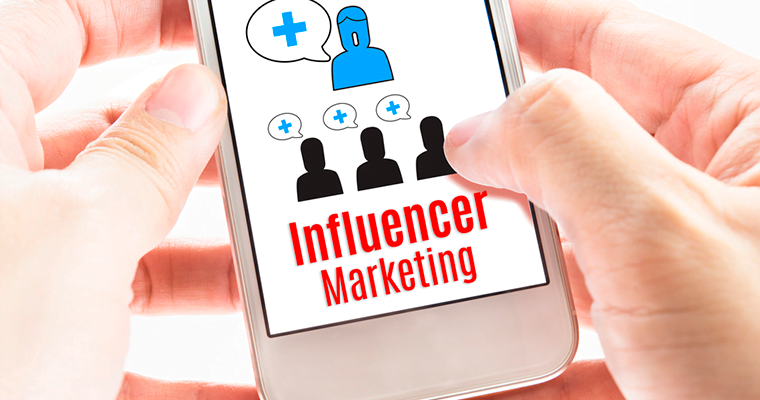.png)
Influencer marketing is one of the biggest trends in marketing circles at the moment – and for good reason. Winning an influencer’s support for your brand can be magic, but there is a snag in the current process. Bombarded with mentions the buzzword, marketers have become obsessed with the very idea of influencers and are often paying little to no attention to the basics of what’s actually quite a complicated marketing strategy.
The goals, the planning, and the supreme understanding of the nature of human relationship – without any of those, your influence marketing campaign will likely be a waste of time and budget.
So if you’ve decided to give this tactic a shot, I encourage you to read my article to clear your head and plan out a campaign that’ll lead to real results.
Step 1. Set clear marketing goals and objectives
Influencers have the power to influence different audiences in a different manner and via different channels. So first and foremost, you need to decide what kind of extra exposure you’re trying to gain. And, with this goal in mind, figure out who your desired influencers are.
Depending on the nature of your business and your creativity, the goals could be almost anything. Here are just a few of the more obvious examples:
Are you looking for a very specific media coverage?
Then you’ll likely need an actual journalist writing about a particular topic in a particular magazine.
Do you want to gain offline exposure for industry events?
Your influencers of choice wll likely be active speakers that get invited to talk about their niche.
Do you want to gain some traction for your blog on social media?
In this case you’ll be looking for active social media users that have a significant followings of trusting engaged readers.
The list goes on. But as it’s pretty much impossible to cover all kinds of goals and all kinds of influencers, the only way to move forward is to prioritize your current goals and people that can help you achieve them.
Step 2. Find the right people
So you’ve decided on your goals and come up with an image of an ideal influencer. Now comes the hard part – you have to find them.
Luckily, there’s plenty of useful software that’ll make the search job much easier for you.
Find Social Media influencers
A number of social media monitoring tools have functions which can help find influential users. Once you’ve typed in a relevant product category and/or a relevant topic, they’ll show you a list of people that have mentioned it – these lists are normally hierarchical, with people that have a large following/website traffic and mention the chosen product category a lot on top of the list.
The second way is to monitor your competitors (using a social media monitoring tool as well) and choose people who have mentioned your competitors. Chances are, if they’re interested in their product/content, they’ll be interested in yours too.
Examples of software to use: Awario, Brand24, Mention.
Find relevant journalists
All hail the information age: there are tools for that, too. MuckRack, Hey. Press, and Right Relevance all help you discover journalists based on the topic you are interested in.
Find offline speakers
The simplest way is to search the web for speakers that take part in offline events of your interest. If you target a particular location, search for relevant seminars and find out who is hosting them and who is presenting at them.
Find guest bloggers who can mention you on a particular resource
If your life-long dream has been for your product to get mentioned in Forbes, you might try getting in touch with Forbes contributors who frequently write on a relevant topic. Simply search Google with a query like:
site:forbes.com “topic relevant to your product”
And look through the posts that show up and their authors.
Sure, these are just a few examples, and you can come up with many other creative ways to find the right influential people depending on your goals and your business niche.
Step 3: Qualify the best (read: most promising) influencers
Now you have your long list of influencers. But is it possible to build successful relationships with a dozen people or more? Maybe not – building relationships requires personalization and a lot of effort, so you better get picky here, refining your list based on both your chances to succeed with the outreach and the potential results of the established partnership.
What should you look at?
Do you have a personal connection?
A personal connection – even a minor one – can make things much easier for you. Check if you’re connected on LinkedIn, Twitter, or any other social network. Don’t forget offline world, too – maybe you’ve met at a conference, know someone who knows them personally. Check if they’ve already mentioned your brand and are, therefore, at least aware of you.
Are they already promoting your competitors?
This is a good sign – it means they’re interested in this type of product, have enough knowledge about it, and don’t mind doing some promotion. Promoting you, too, might even strengthen their reputation because their audience will see that they’re not “sold” to one of the brands.
Is their community engaged?
This is especially important if you’re looking for social media influencers and have been enticed by their huge Twitter following.
Keep in mind that on some social networks, buying followers has become a common practice, so several hundred thousand followers doesn’t necessarily mean a user has influence. Make sure to check if the audience is truly engaged, actively commenting, liking or sharing the influencer’s posts.
Who is their community made of?
It’s great if an influencer has an impact on the audience of your future customers, but wouldn’t it be even better if they had influence over a number of other influencers, who, in turn, have an impact on their own audiences of your future customers?
Hence, if you’re approaching an influencer who hangs out with other influencers, you’ll likely be able to reach a much bigger audience.
[Source: Socialmediatoday]










